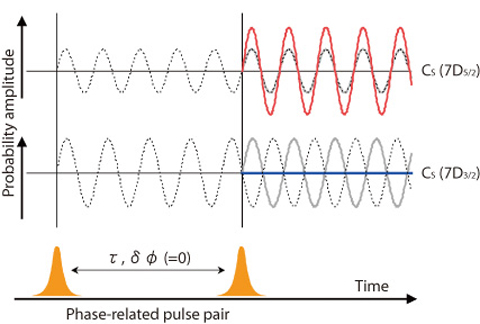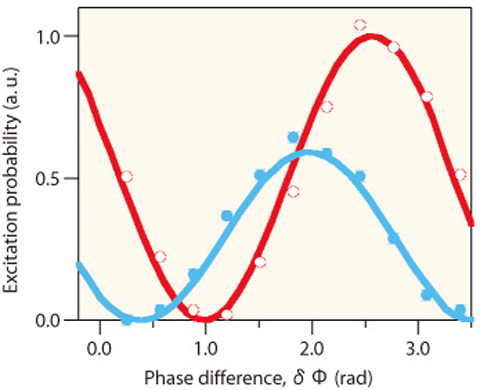Fig.4-33 Ultrafast selection with the "optical key"

Fig.4-34 Mechanism of the ultrafast selection

Fig.4-35 Phase difference dependence of the excitation probabilities to the two states
The quantum computer concept is attracting much attention as a future technology for ultrafast computers. Using the same quantum mechanical principle, a new method to control materials is being studied by physical chemists. Here, materials are cut or joined utilizing their wave character at the microscopic level of atoms and molecules. This method utilizes light, which also behaves as a wave. The wave form of light is molded into an "optical key" which induces the reaction fitting the key (Fig.4-33).
In a fundamental experiment to establish this technique, we tried to control the probability of photoexcitation of cesium to one state, applying the pulse shaping technique which was learned during development of the ultra high peak power laser at the Kansai Photon Science Institute (Fig.4-34). We were able to selectively generate one out of two states which have nearly the same energy, in a very limited time. This ultrafast selection could be done with an ultra-short phase-related pulse pair (Fig.4-35). This figure indicates that complete selection of one state, rejecting the other state, is possible with a delay time of 300 fs. The generation ratio between the two states was more than a hundred times greater than in the case of conventional laser pulses. The principle of this selection is the quantum mechanical interference and, thus, totally different from the usual method.
We believe that this ultrafast selection will ultimately lead to a breakthrough in the isotope separation which is required of nuclear wastes, semiconductors, and medical regents. In nuclear waste disposal, long lived fission products (LLFP) like cesium must be separated according to their isotopes. LLFPs are to be transmutated in a fast reactor to reduce the future dose to the public. However, for some species, the transmutation was found not to be feasible economically without isotope separations. Therefore, the development of isotope separation techniques of these species can help to reduce the future load to the environment. Additionally, isotope separation of valuable noble elements like paradium is desired to extract them from nuclear wastes. The present results should contribute basic understanding needed to achieve such a separation process.